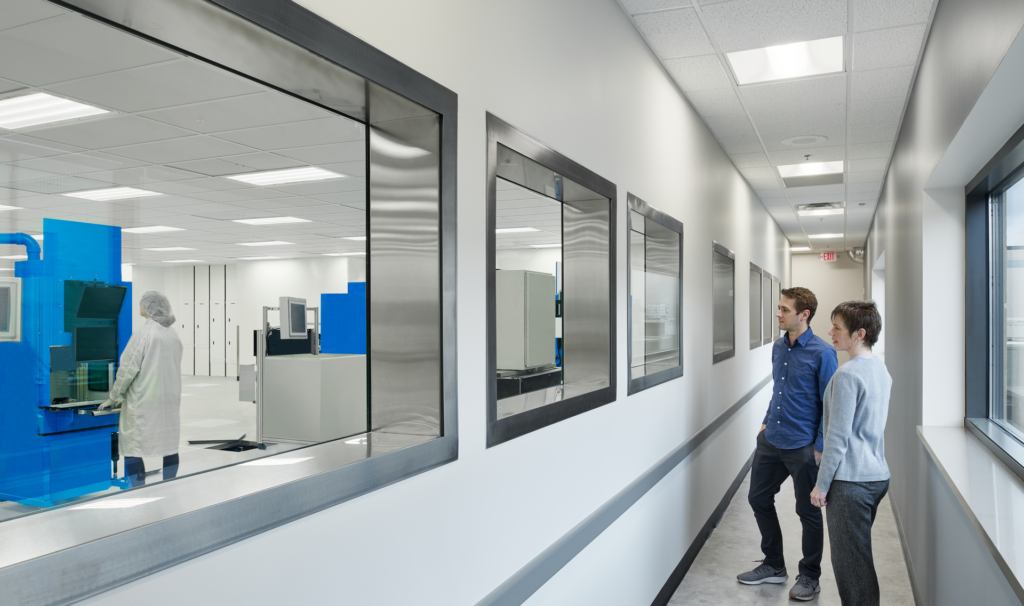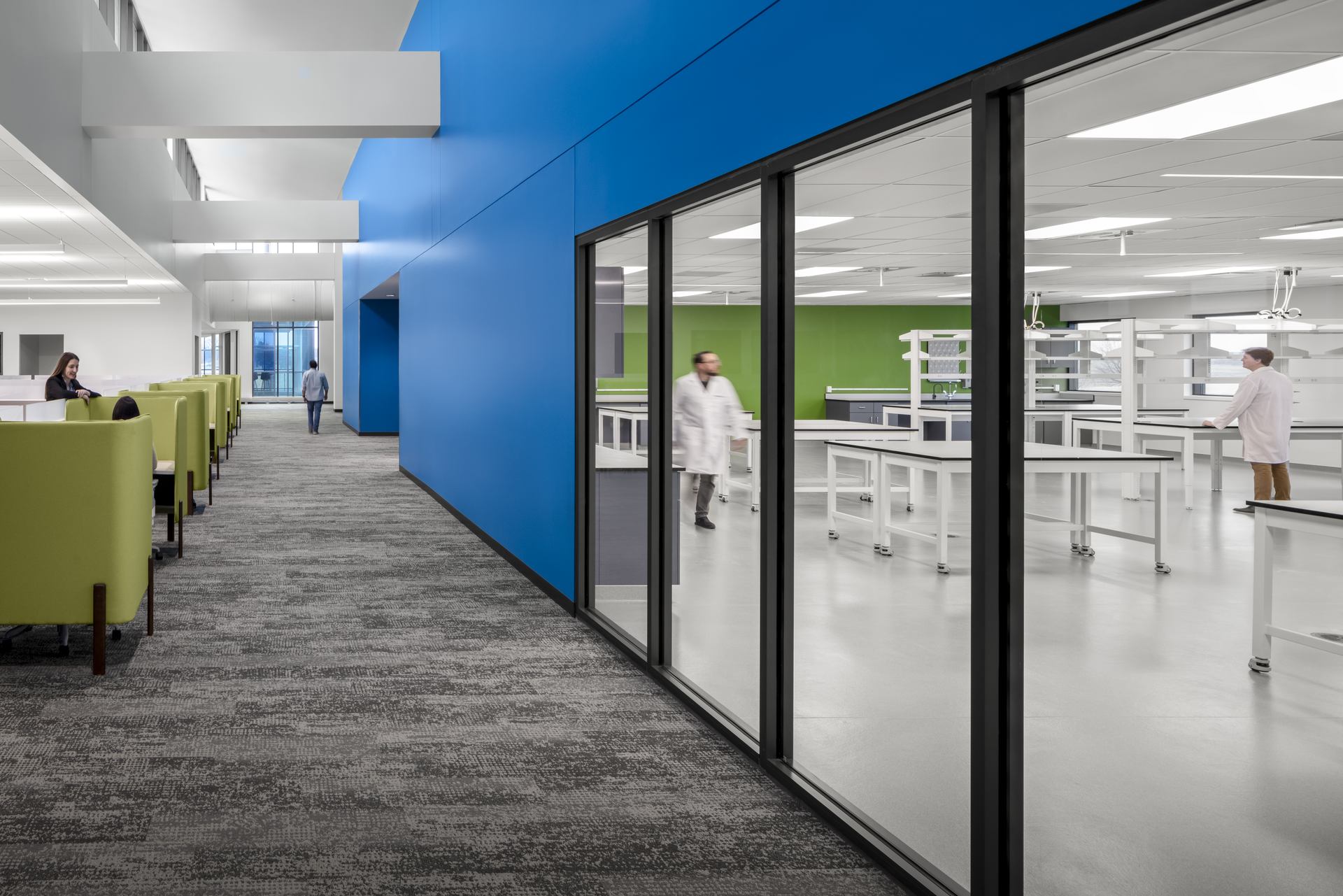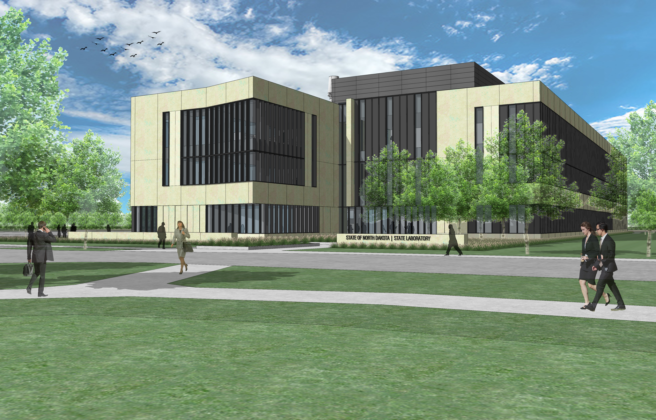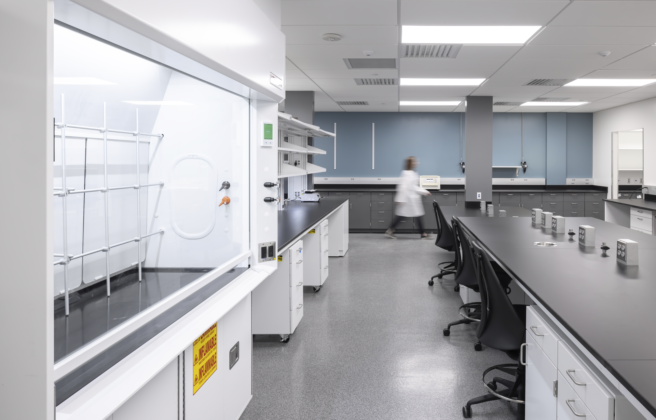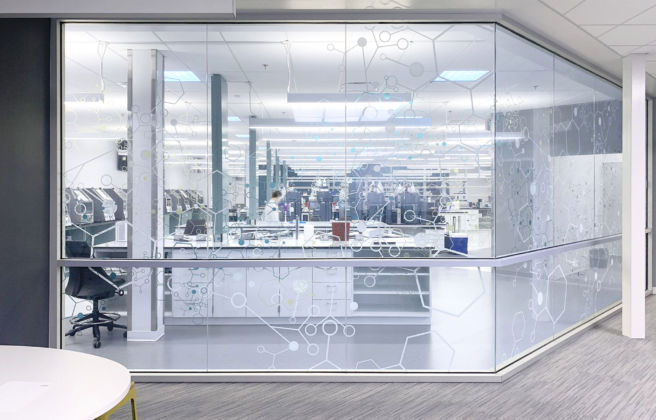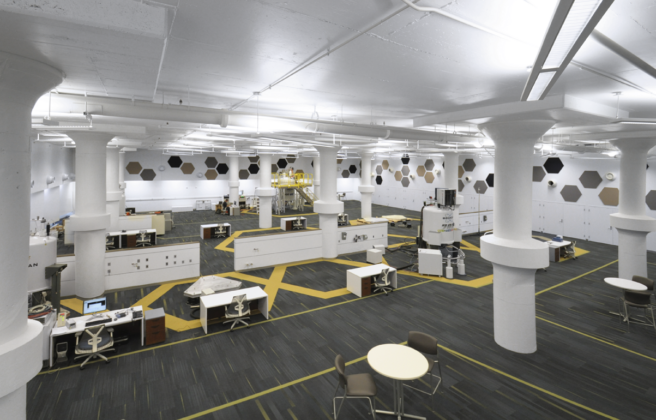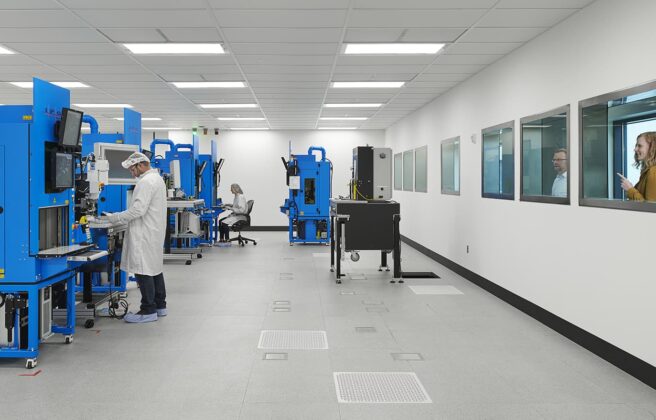The research, development, and production that takes place inside science + technology facilities is highly complex and technical. It’s no surprise that the design work that brings these environments to life demands the same level of precision. Design, engineering, and contractor teams partner closely to coordinate the advanced MEP systems and intricate space planning that maintain sterile, safe, and efficient operations.
On this episode of Side of Design, we’re joined by a couple of our own trusted partners, who add their unique perspectives on what sets these complex projects up for success—and how each discipline contributes. Bringing deep experience in the science + tech market, Partner and Mechanical Engineer Nic Igl from Dunham, Horwitz Inc. CEO Emeritus Bill McKoskey, and BWBR Principal Nate Roisen dig into developing high-tech environments.
High-Tech Defined
“I think the first thing we need to talk about is what type of projects we’re referring to when we think about a high-tech project,” offers Nic. Cleanrooms and laboratory environments are the primary project types that these teams work on, which fall into a few categories: medical device cleanrooms, pharmaceutical cleanrooms, and semiconductor cleanrooms, each with their own distinct, technical needs and risk factors.
“If it’s a pharma market, you’ll spend hours talking about cross-contamination and biological infection with the client and working through different strategies to minimize those risks,” Nate says. “If you’re working in the semiconductor world, all of a sudden you have to be worried about static electricity.”
In each of these sectors, controlling the clean environment leads to a lot of additional requirements from the MEP systems. Maintaining cleanliness requires frequent air changes per hour in a space, ranging from 25 air changes to over 80 air changes in highly clean environments. “So, we end up with a number of piping systems and duct systems, which we’re still trying to squeeze into the same size box. It’s complex and congested and a coordination challenge,” says Bill.
A Team-Driven Approach
Most building projects follow a similar path—designers send their work out for bid to contractors, where they’re selected based on cost and value. Science + technology projects, however, take on a different approach, and it’s critical that all teams are involved from early on. “This project type just simply demands teamwork,” says Nate.
In the case of contractors, “We understand cost pretty well, we also understand constructability pretty well. So, we can hopefully comment along the way and make sure we’re still hitting the budget we want to hit and making sure everything fits in,” Bill explains. “That’s the value the contractor brings into this early in the game.”
“On the MEP design side, we can focus more on what is the right design, what are the right parts and pieces that we need in order to meet the requirements that we set,” Nic says. “Having a team member like Bill on board is great because it helps us to bounce off the impacts of different concepts that we could do to understand the cost implications and construction timeframe.”
Meanwhile, architects require an understanding of MEP system sizes to determine the square footage of the areas they’ll be housed in. As Nate points out, “You can’t order a unit if you don’t know how big the space is that it has to fit in.” In one project example, the BWBR team was able to meet a challenging schedule due to early, accurate estimations of MEP system rooms from Nic and his team. “That takes some experience, knowledge, and trust from the MEP team and the architectural team working together to make something like that happen,” says Nate.
The Stakes are High
Meeting tight timelines is distinctly important in this market, where getting a return on investment quickly is critical to securing funding from investors. The rapid schedule means it’s not uncommon for equipment procurement and installation to begin before the design is complete. “Sometimes we don’t even know exactly what tools are going to be installed in the building until we get closer to the end of construction,” Nic says. “So, as we think through what services we might need to support these individual tools, we have to provide some level of flexibility to add additional specialty gases or pipe systems down the road.”
Third-party certifications like the FDA also come into play in developing medical and pharmaceutical products. “If their cleanroom doesn’t achieve certification, they have a bunch of product that they now need to throw away,” says Bill. “It’s a scary scenario.”
The stakes are high in getting science + technology facilities constructed and operational, and the design complexity raises them even higher. Because of this, “it’s really important to have a solid OPR (the owner project requirements) and a basis of design before you even start putting pen to paper so that you know the direction you’re going and you don’t end up in a place you don’t want to be,” says Bill.
The Key to Success
“As I think about our most successful projects, the ones that come to mind are the ones that had the most engaged staff from a client standpoint,” says Nate. “It’s not easy to say, ‘at the end of your 40- or 50-hour a week job, come answer a bunch of questions from a design team.’ But the more space that’s built into those peoples’ schedules to do that, the better the end result will be.”
“I think my advice to an owner would be to seriously consider a design assist concept. I do believe there’s a lot of value in bringing the contractor on board early so that they can share their expertise,” says Bill. “The concept’s been great for a lot of projects that these three firms have worked on together.” By leveraging the knowledge of all team members, these projects navigate challenges like tight timelines, complex systems, and evolving requirements to deliver high-performance facilities where innovation can thrive.


